
 The headspace in hydraulic equipment.
The headspace in hydraulic equipment.
In the previous tech-talks, MH Hydraulics FZC, a leading hydraulic solutions provider in the Middle East, discussed hydraulic oil contamination, ways of preventing oil contamination by means of effective filtration, use of desiccant breathers, selection of hoses and fittings, etc. In this tech-talk, we would like to talk more about headspace management in hydraulic and lubrication systems.
What is headspace?
Headspace is the clearance between the inside ceiling of an oil tank or reservoir, and the top of the lubricant or oil within the container or it is simply the air above the oil in tanks, reservoirs, and lubrication compartments.
Equipment breathes: Why is it important to manage the headspace?
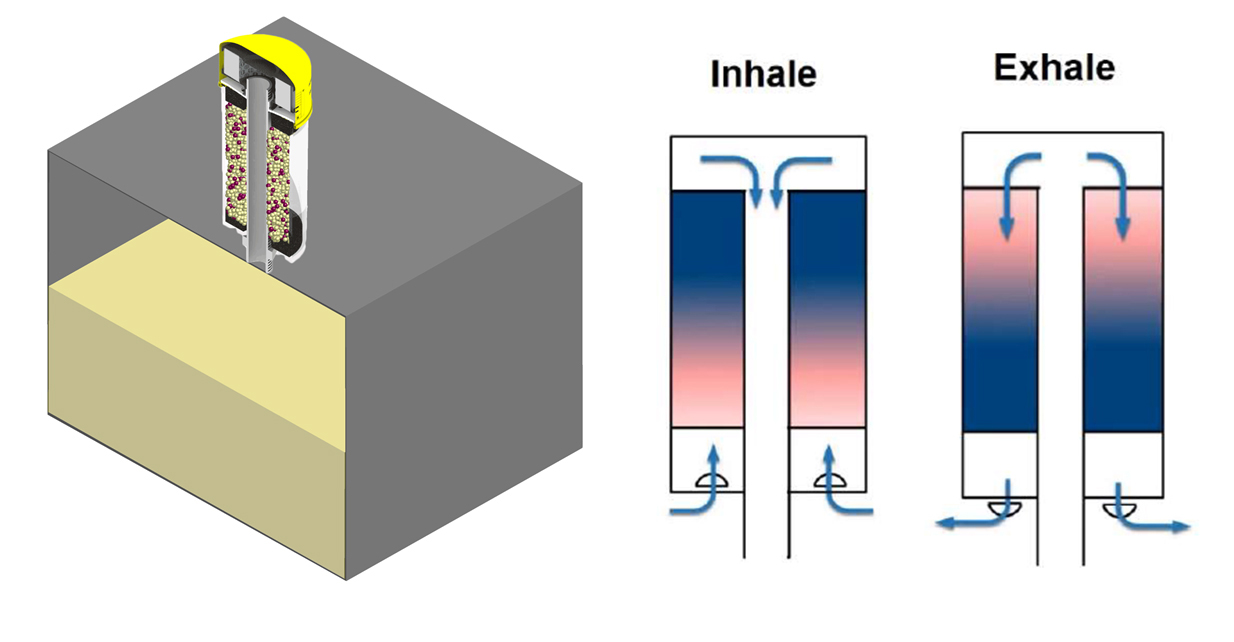
As we use our equipment, there will be oil level fluctuations in the reservoir. When the oil level drops, we need to draw in air from the open atmosphere, and when the oil level rises, we need to expel air from the inside of the tank to the outside atmosphere.
During this breathing, there are possibilities of moisture and dirt particles entering the tank or reservoir and getting in contact with the lubricant or oil and it causes oil contamination.
There are three ways to manage oil contamination:
• Monitoring though visual inspections and oil analysis.
• Removing, by means of filtration.
• Excluding, by using efficient breathers, here comes headspace management.
There are many ways to carry out visual inspections to monitor the condition of oil or lubricant such as by using sight glasses as can be seen in below images of Des-Case. Also, by installing permanent sampling ports on the tank for collecting oil samples from time to time for external laboratory analysis.
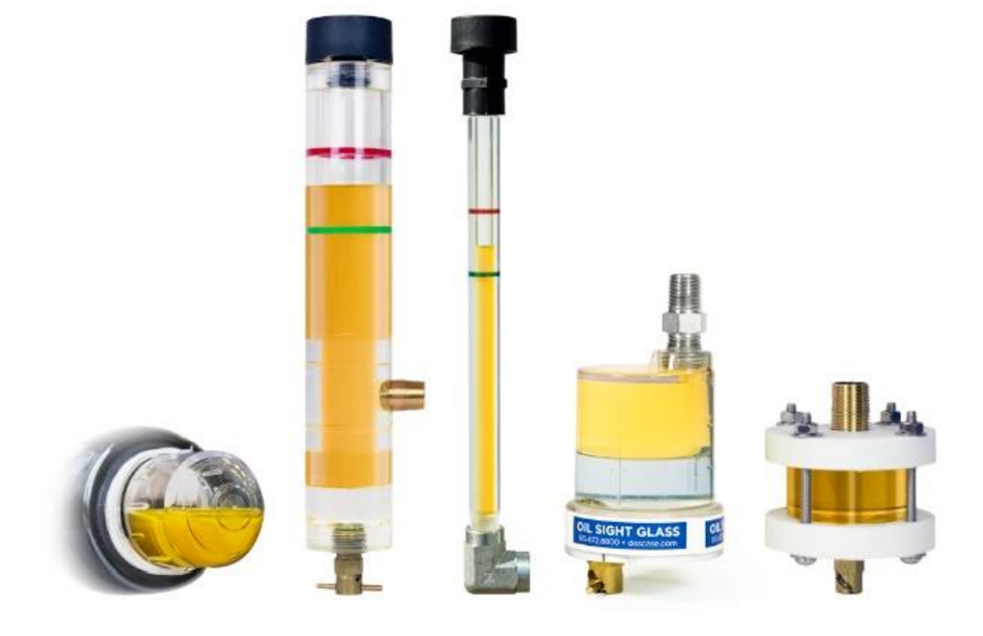
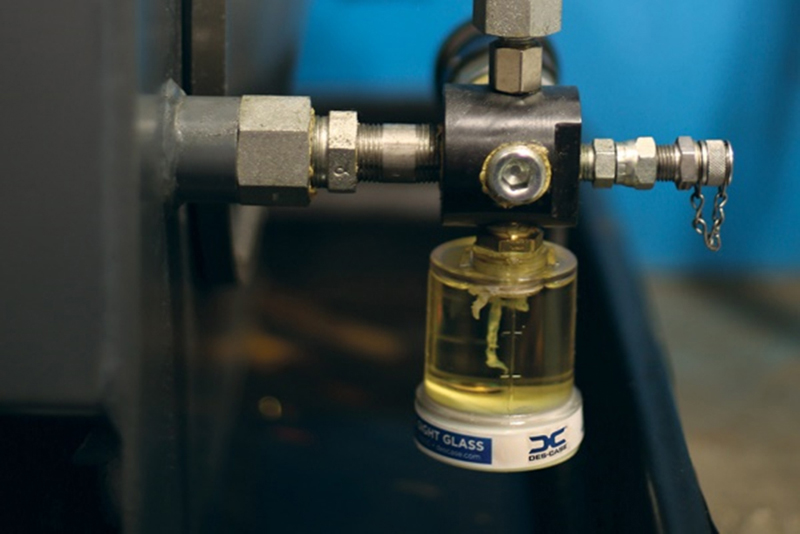
Having a dedicated offline filtration system can help to remove the contaminants from the lubricant or oil.
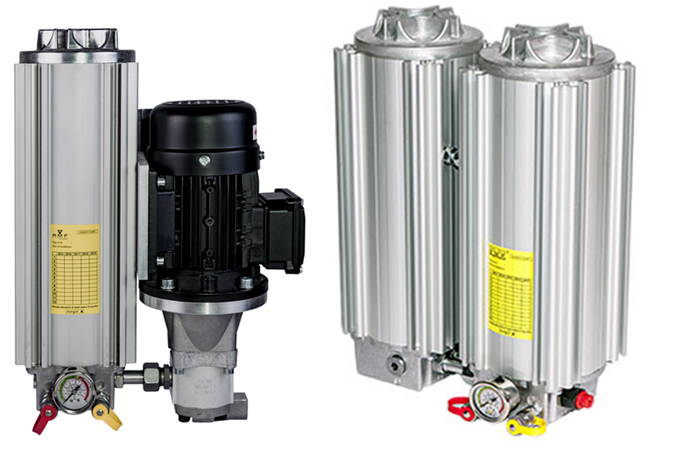
The best practice is to prevent the oil contamination. Studies show it costs about 10 times as much to remove contamination as it does to exclude it.
Having an efficient breather is vital for a clean and dry headspace. Breathers absorb moisture in the headspace and keeps the air inside the reservoir dry. The breather also limits dirt particles entering the reservoir.
Most of the OEM breathers are not effective, they only prevent solid particles from entering the tank.
A quality desiccant breather can ensure a clean and dry headspace. It combines a drying media with a combination of filters to prohibit water and microscopic particulates from entering the system, and to remove water from the reservoir to prevent condensation.
Desiccant breathers vary in design and construction. Some work by using a three-stage design to help ensure the interior of your equipment stays clean and dry. Incoming air is cleaned and dehydrated through an initial solid particle filter, a container of silica gel and another solid particle filter.
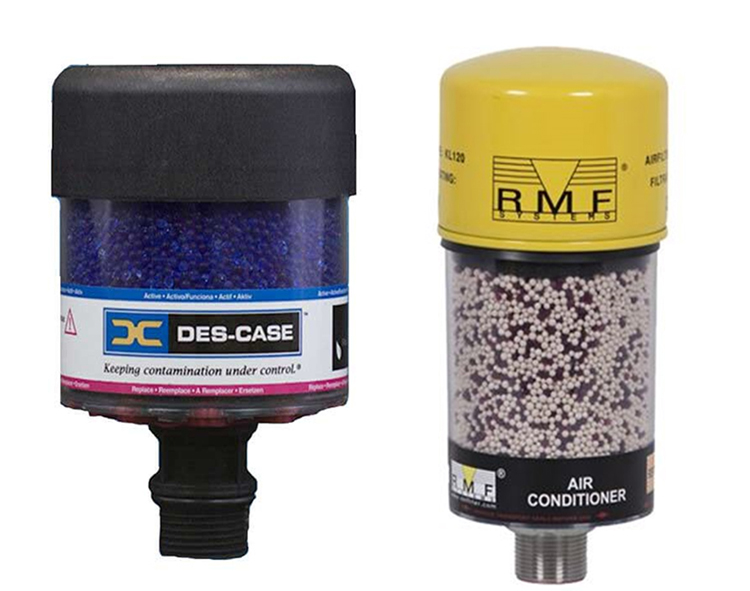
Desiccant breathers are not expensive. For example, Des-Case DC-2 Model only costs approximately $65, and Des-Case KL93 Model costs approximately $150. Having a desiccant breather is an economical way of managing headspace and thereby, limiting oil contamination.
How to size a proper desiccant breather?
The selection is based on the application, air flow, oil volume, environment, and the type of lubricant.
A deeper look into any application will reveal whether the system breathes due to changes in temperature, changes in oil volume due to component application or both.
Knowing the flow rate of your application is perhaps the most important consideration when selecting a breather. Proper air flow is critical to the operation of your system and critical components.
Air flow needs to occur without restriction. If there is a restriction in air flow through the breather, the air will find a path of lesser resistance to follow.
It’s easy to think that the more volume of oil in a system the more air flow potential it has. However, many desiccant breathers don’t just operate when the system is breathing. As a system it’s idle, or if it’s a system that does not exchange large volumes of air during normal operation, the silica is still in contact with the headspace of the component it’s connected to.
Due to the hygroscopic nature of silica gel, this constant connection allows the silica to remove moisture from the humid headspace in the component reservoir preventing it from condensing and re-entering the oil. The larger the oil volume, the larger the headspace is likely to be.
MH Hydraulics and its CRCs in the Middle East can help to size a desiccant breather for your equipment.
To conclude, headspace management is critical in any hydraulic or lubrication system and the best solution is to use an efficient desiccant breather, which is less expensive when compared to the money spent to remove oil contamination or costs associated with equipment breakdown and repairs.
Monitoring oil quality periodically, having filtration systems and desiccant breathers would be the ideal way of maintaining a hydraulic or lubrication system.
Recommendations mentioned in this article such as use of the tools to monitor oil quality, oil filtration, and headspace management by use of efficient desiccant breathers are going to help the operation and maintenance teams by reducing equipment down time and increasing productivity.
*This article is supplied by









.jpg)




.jpg)




























.jpg)
































